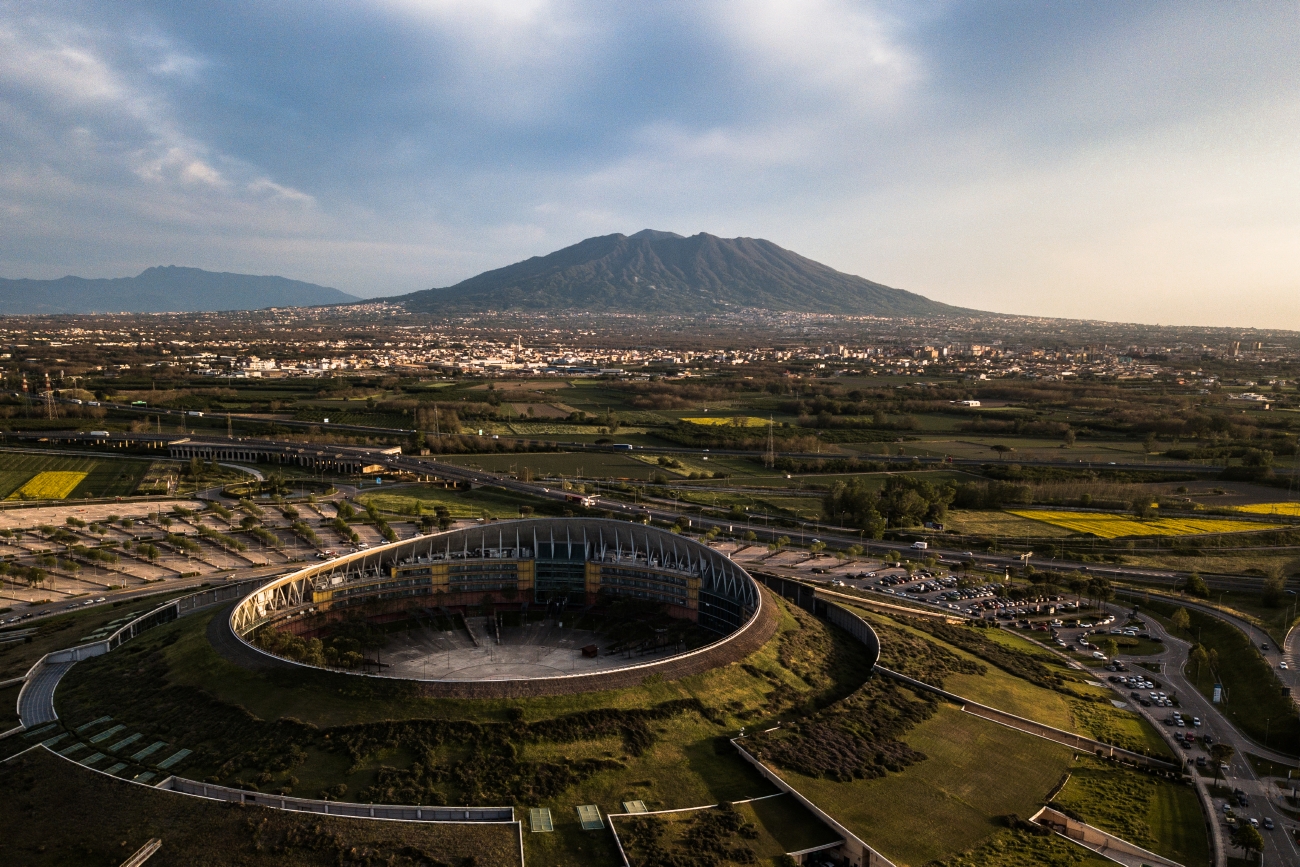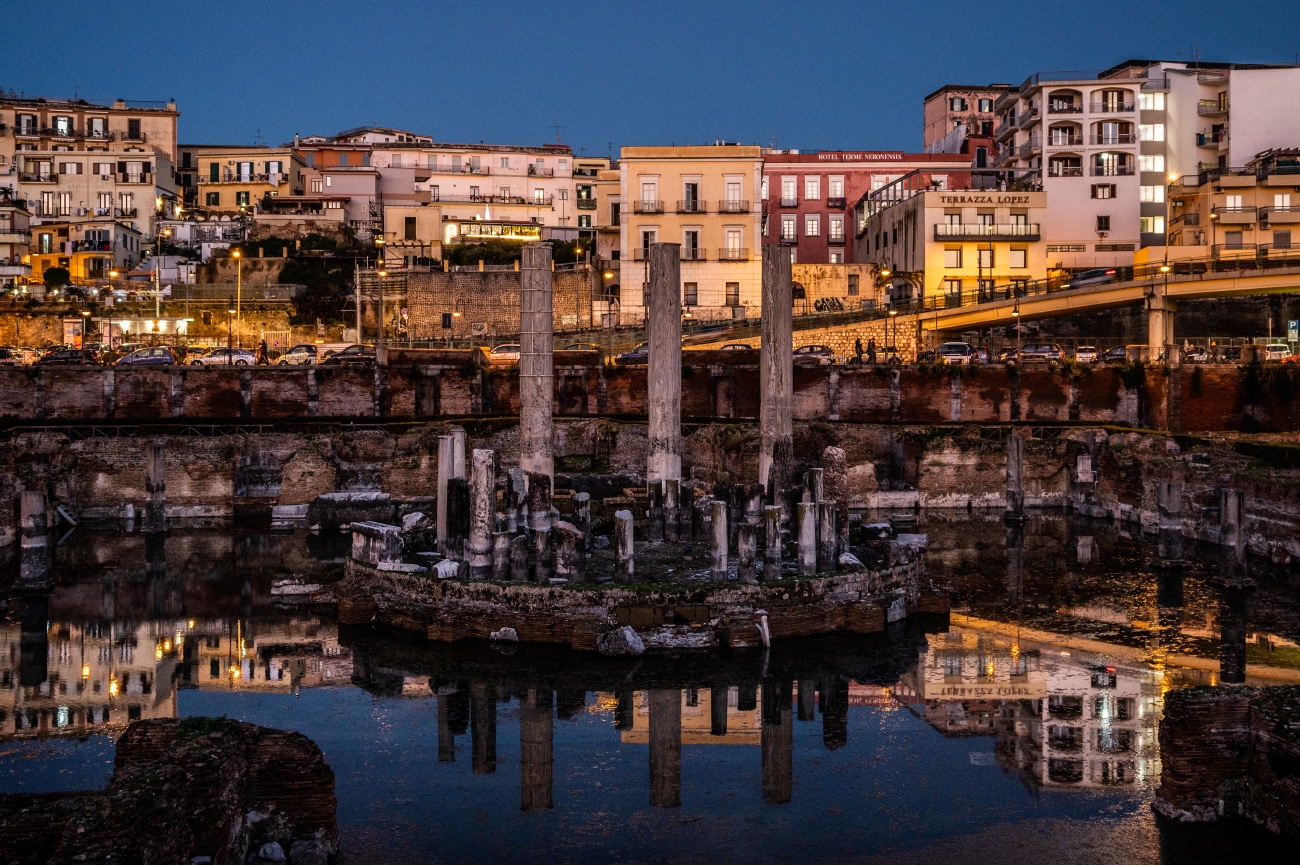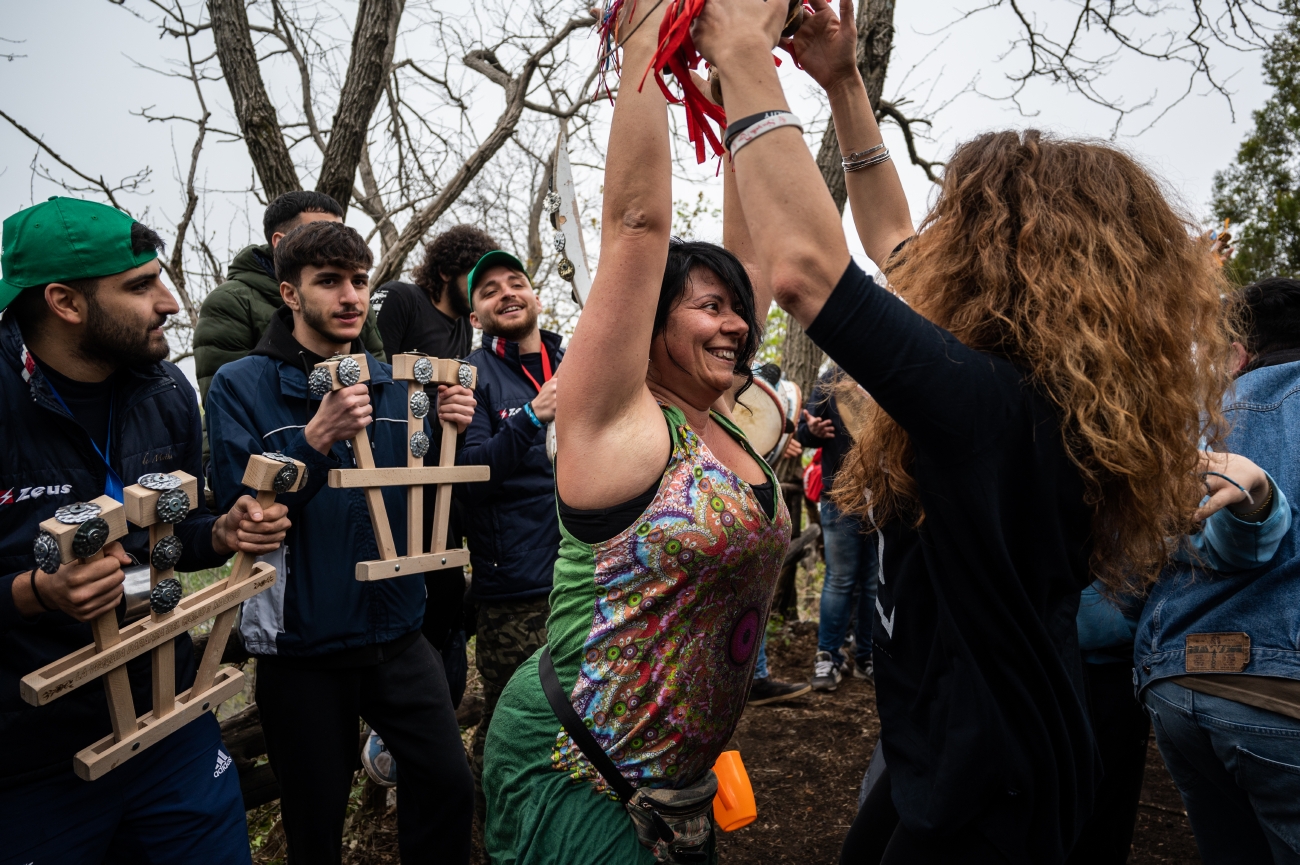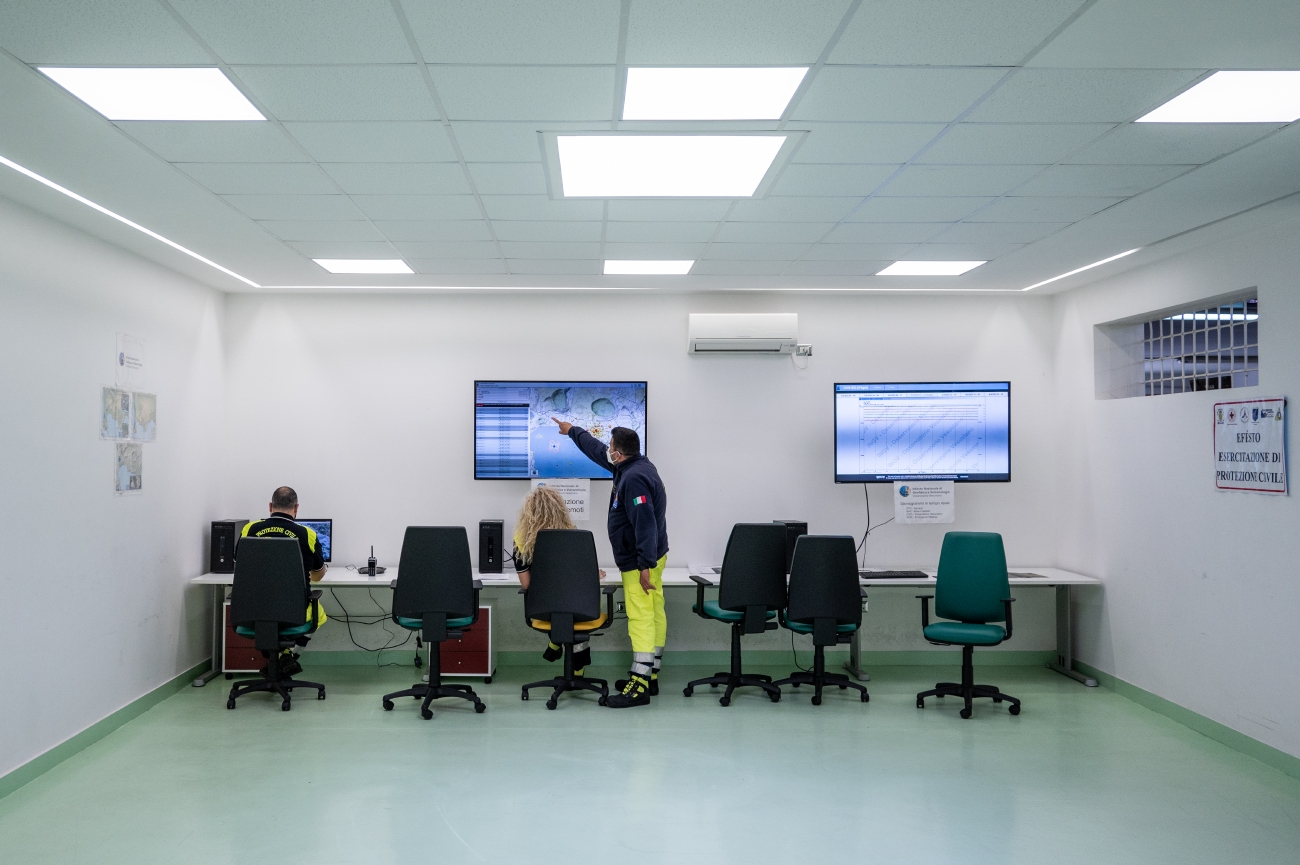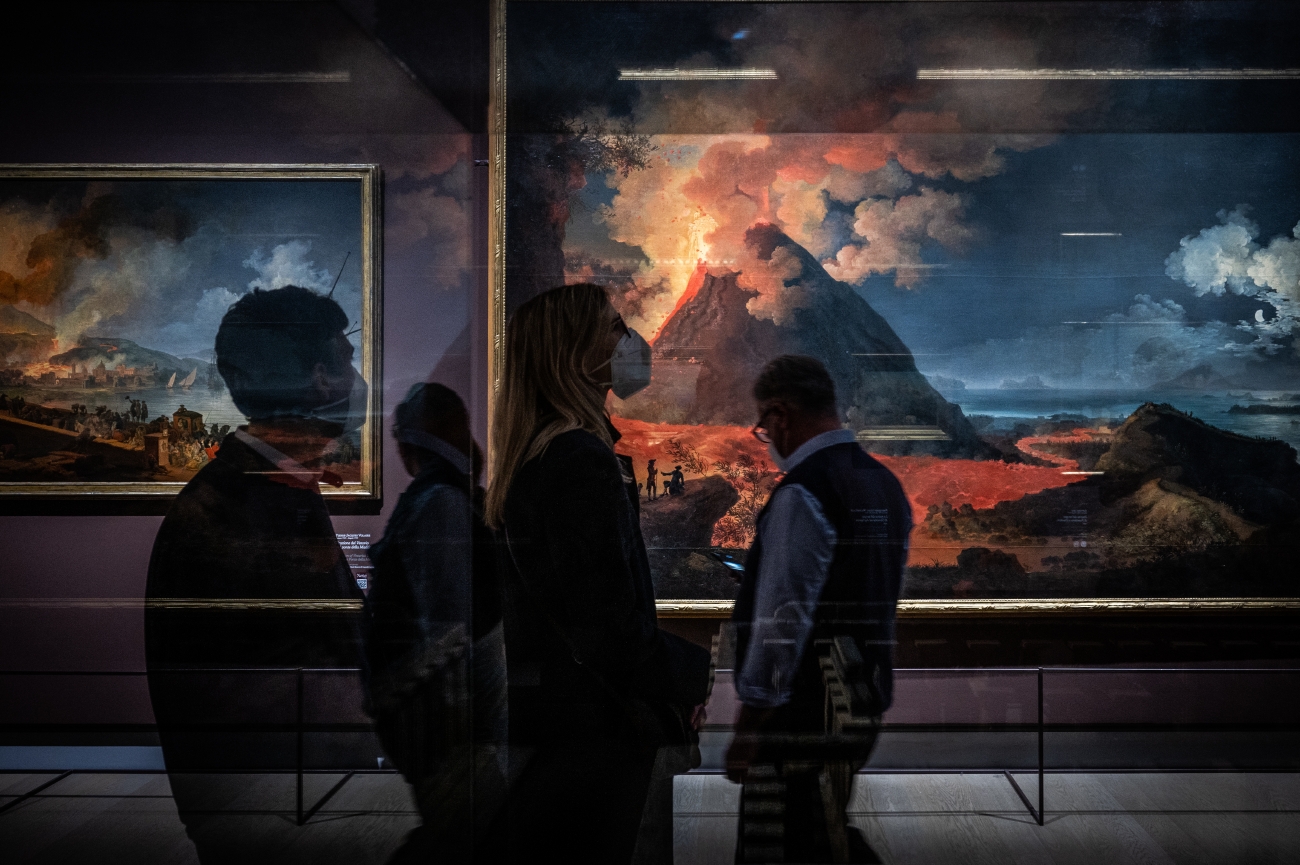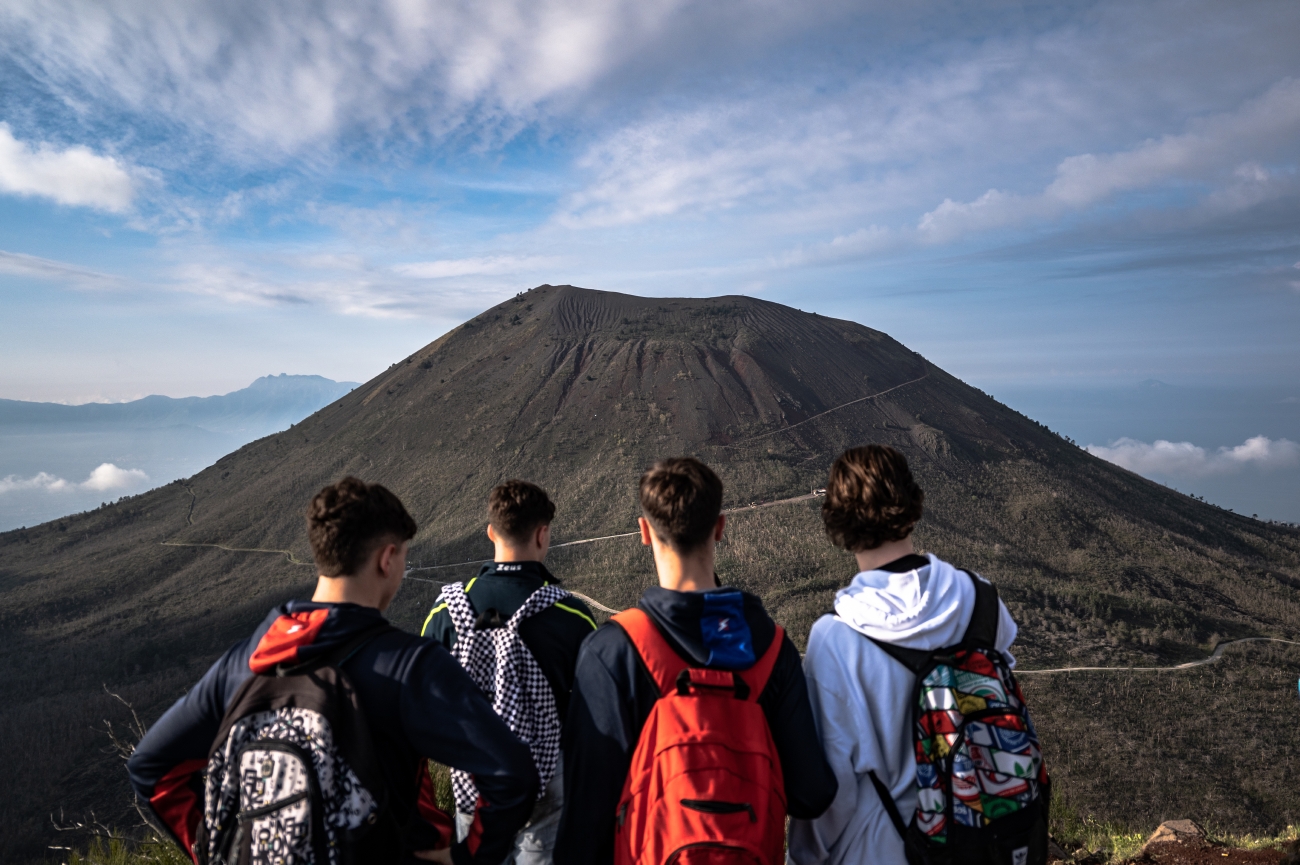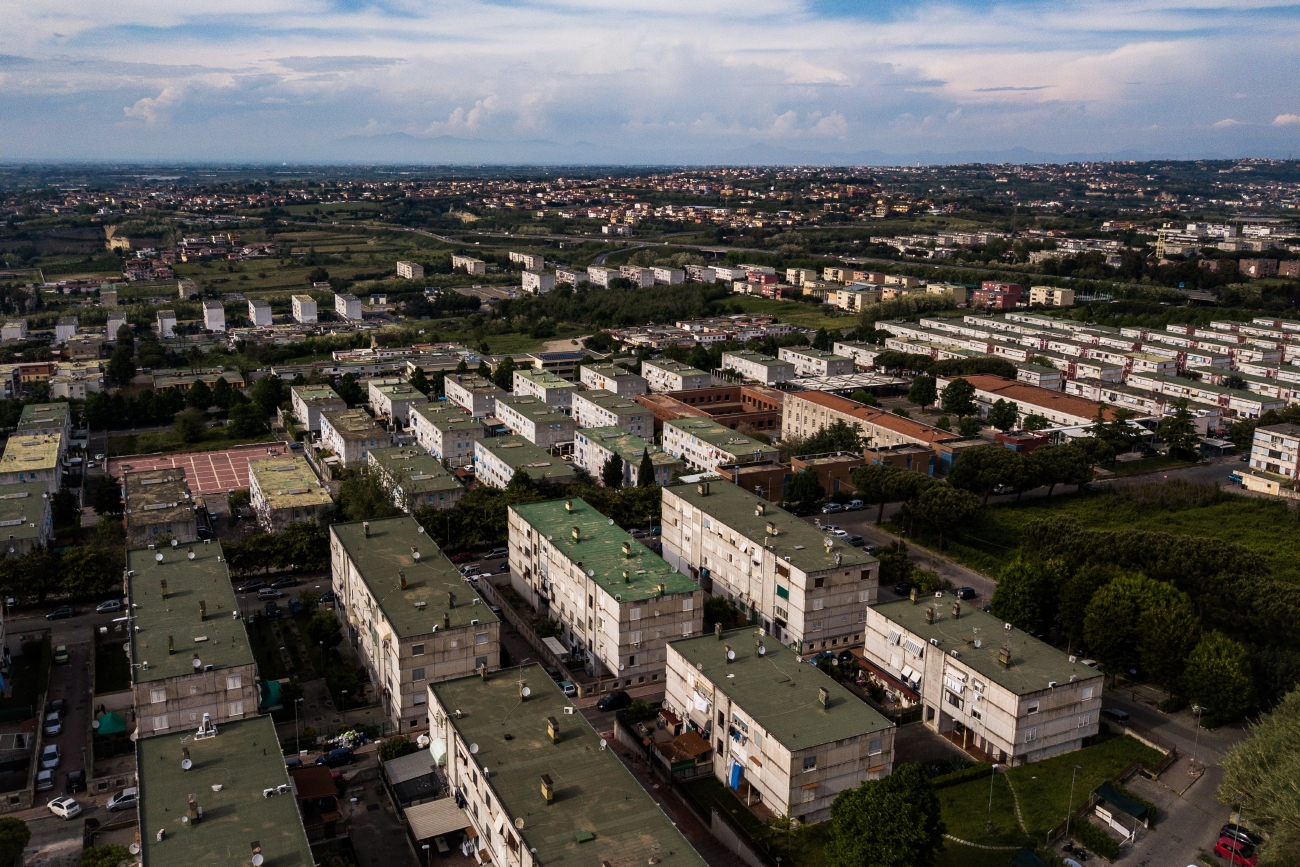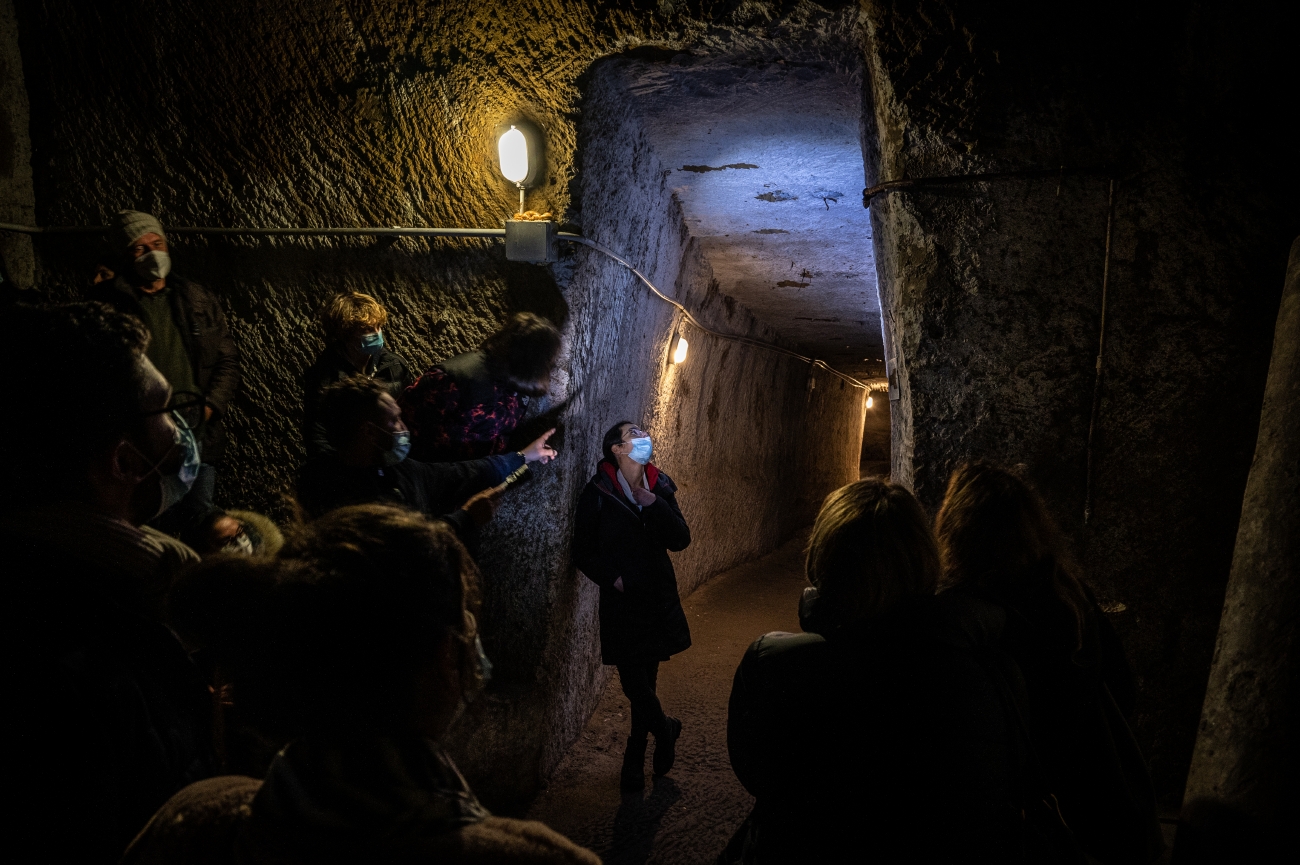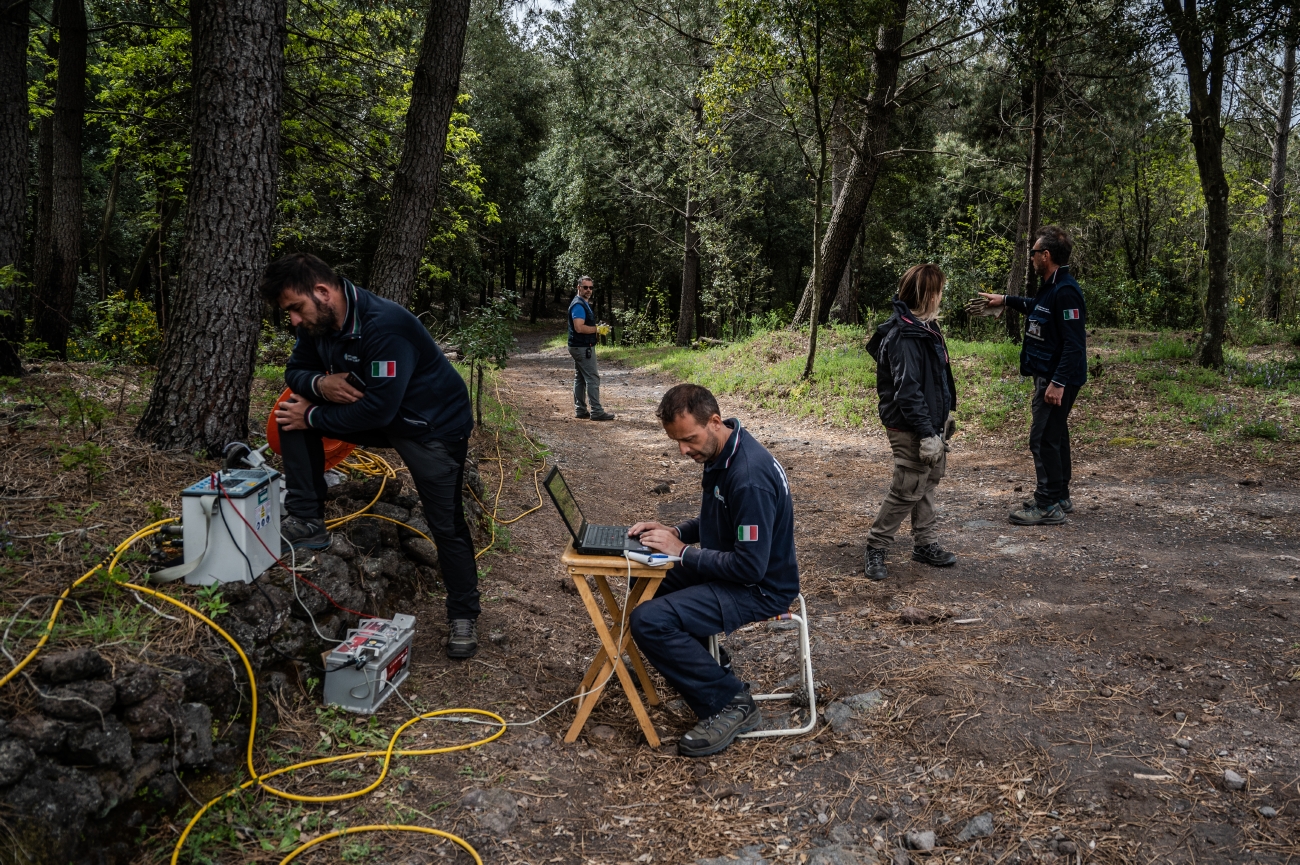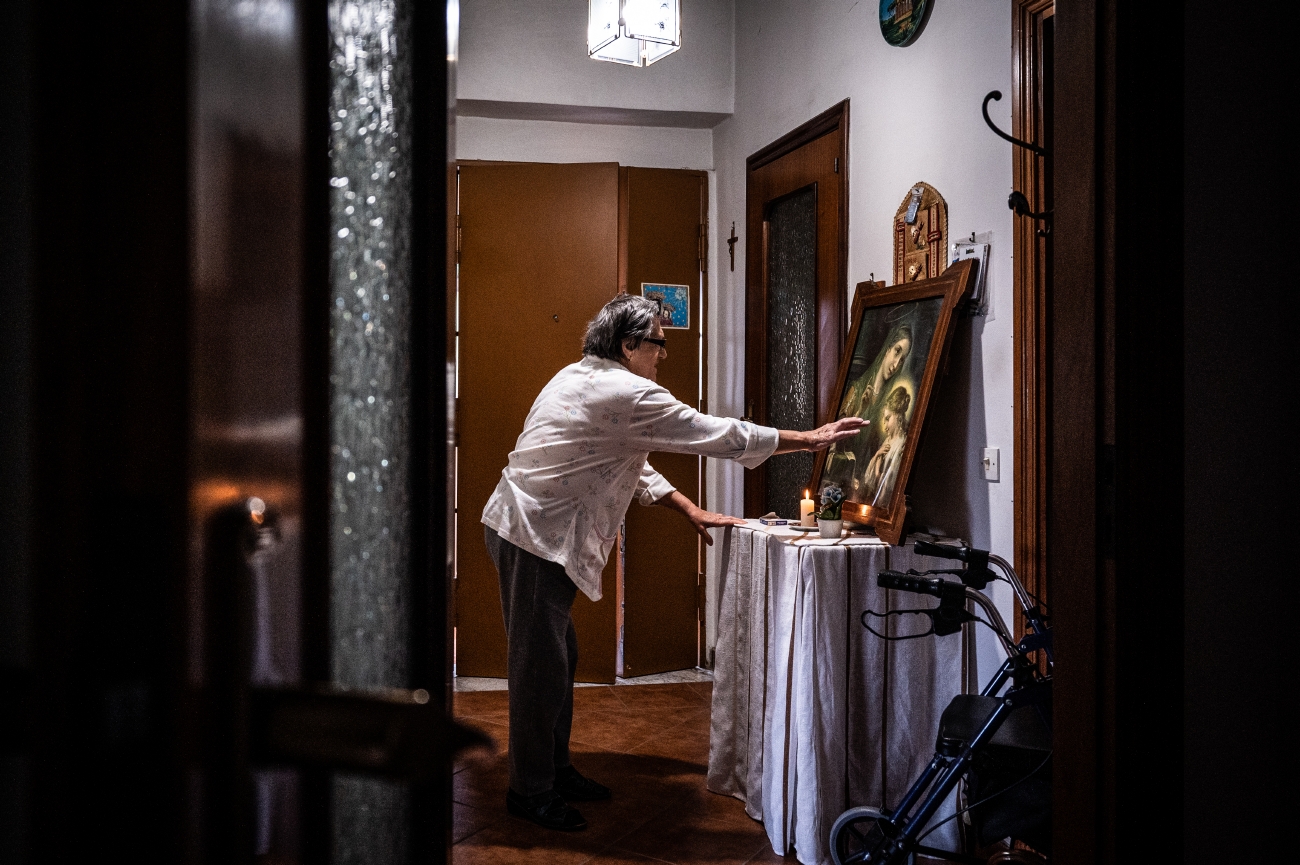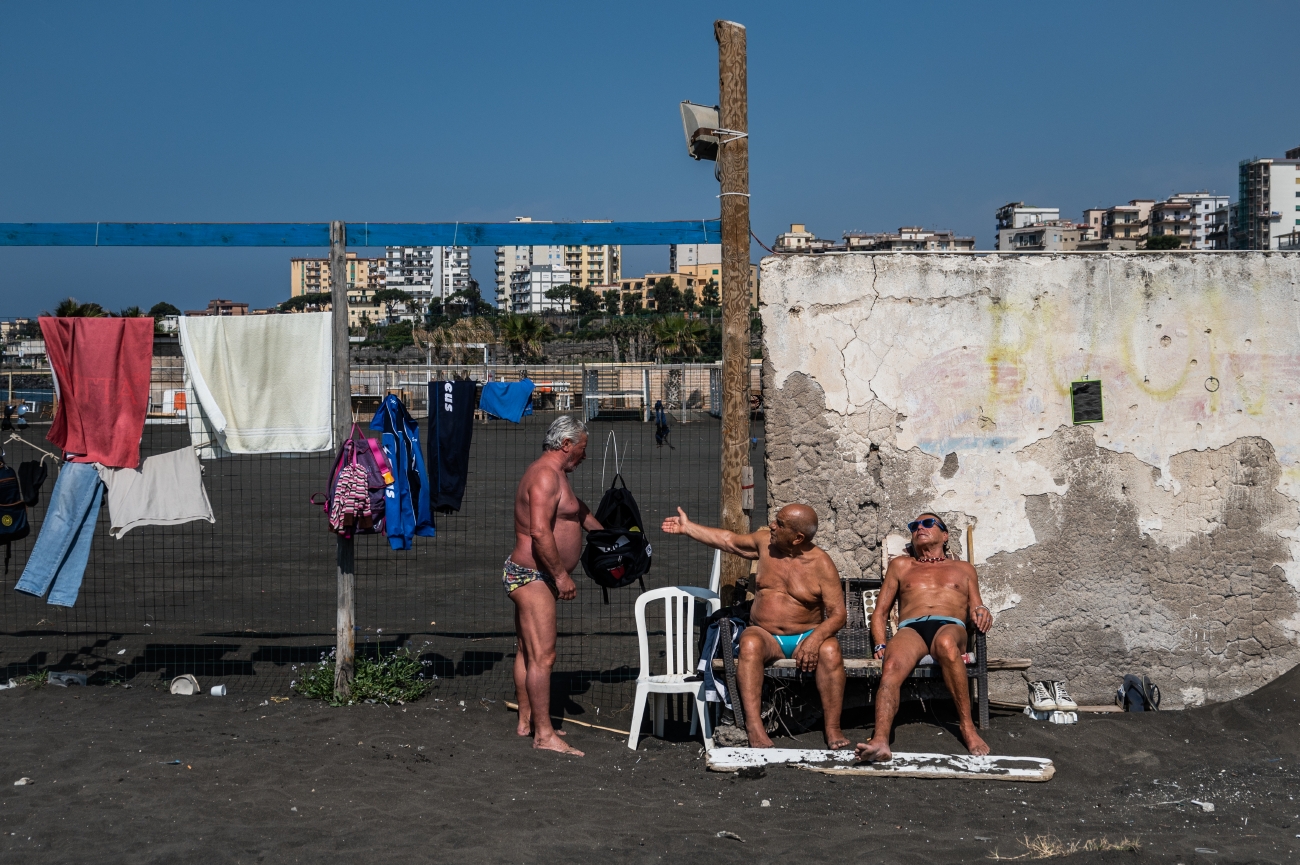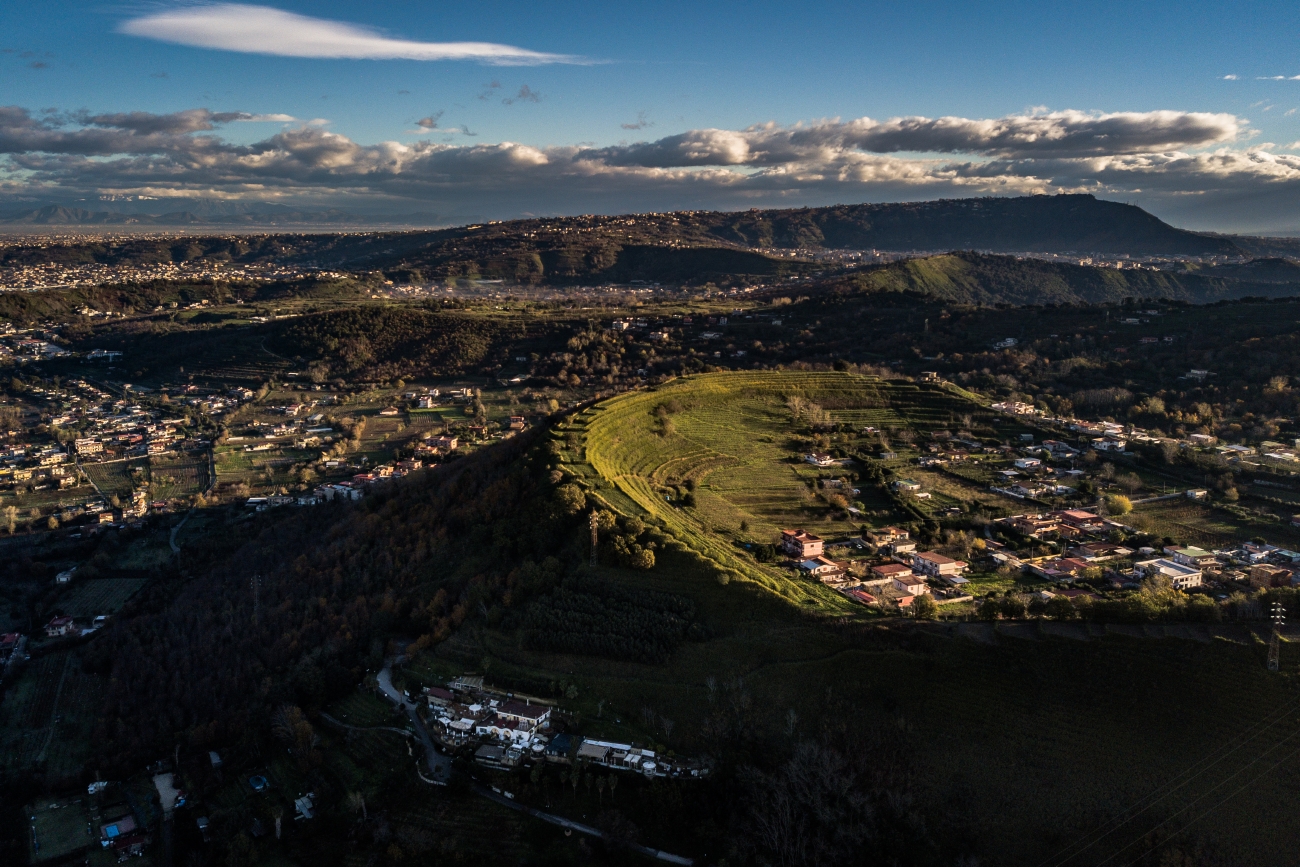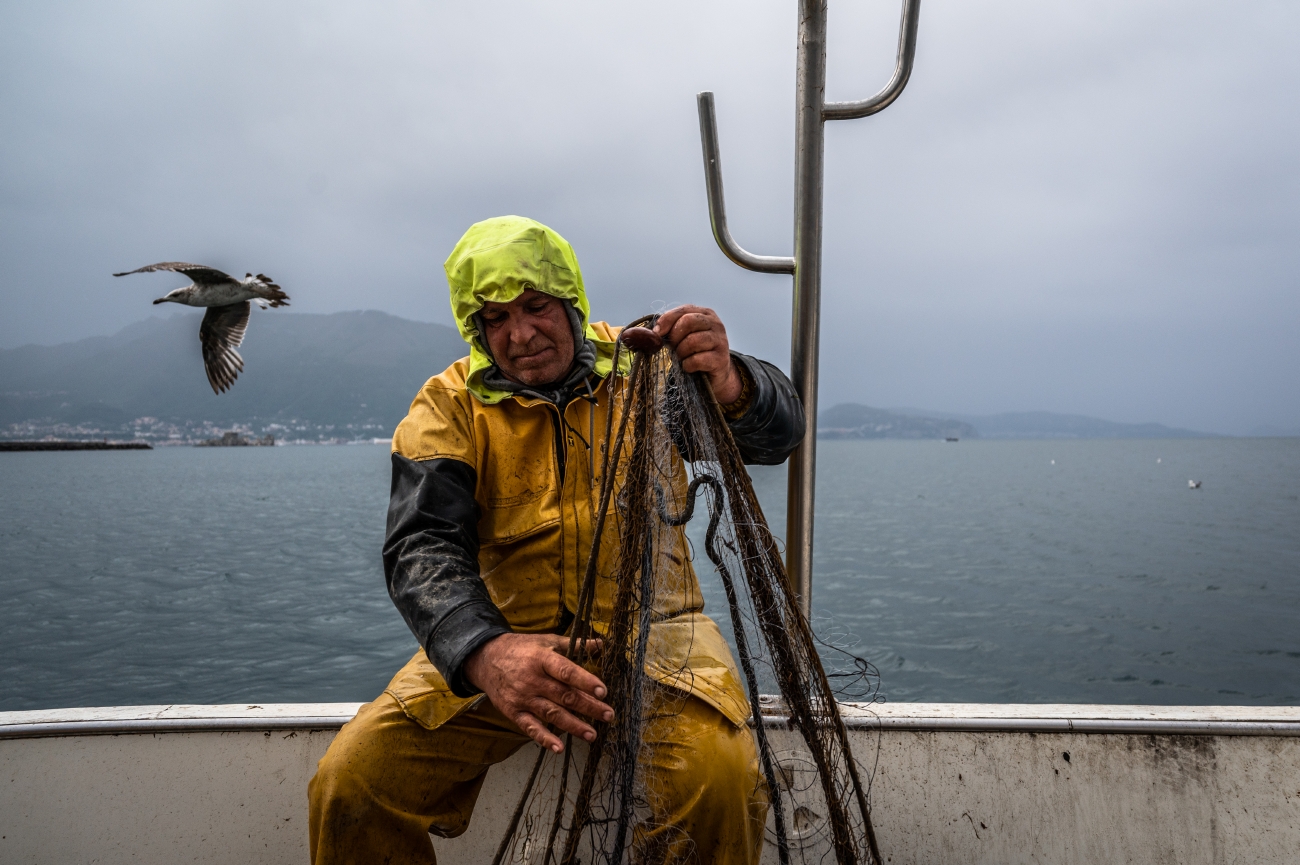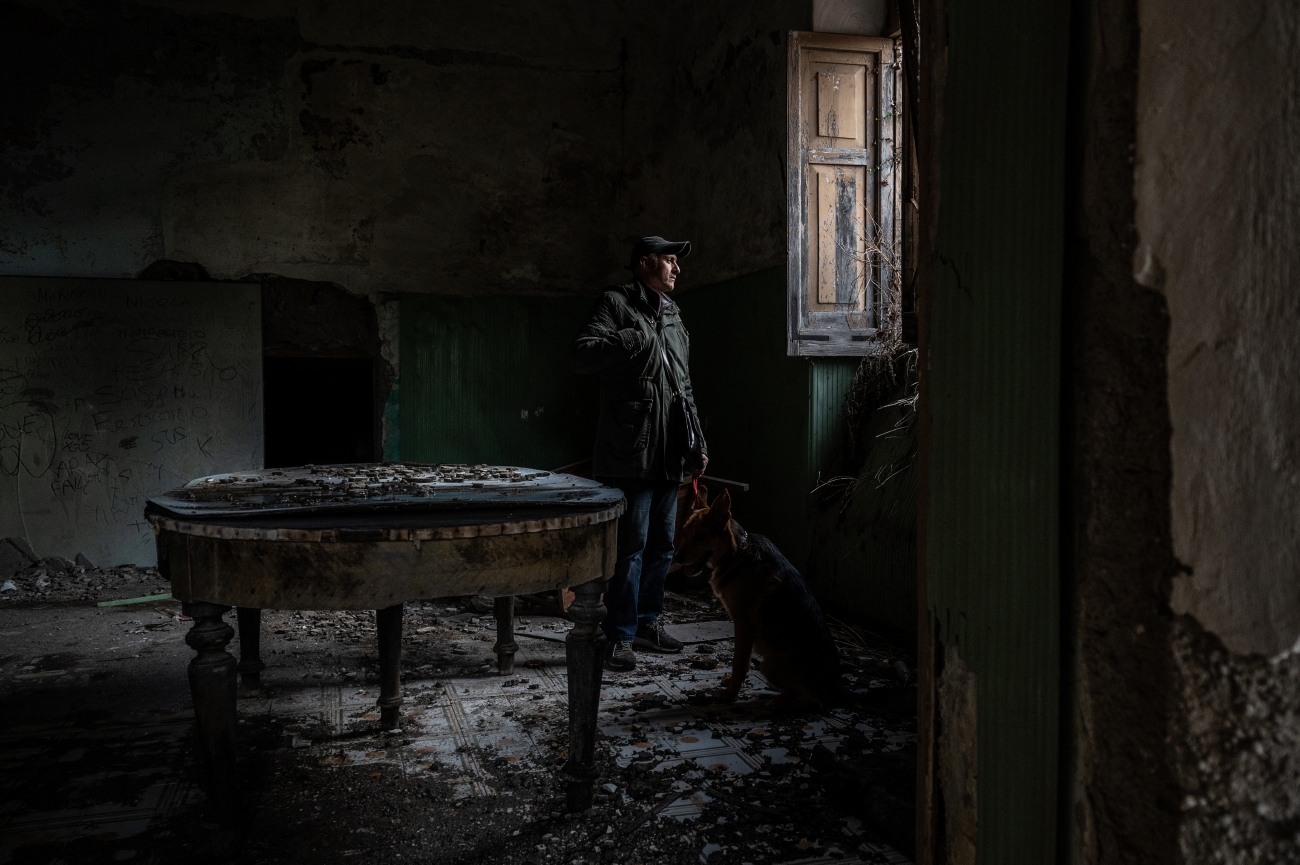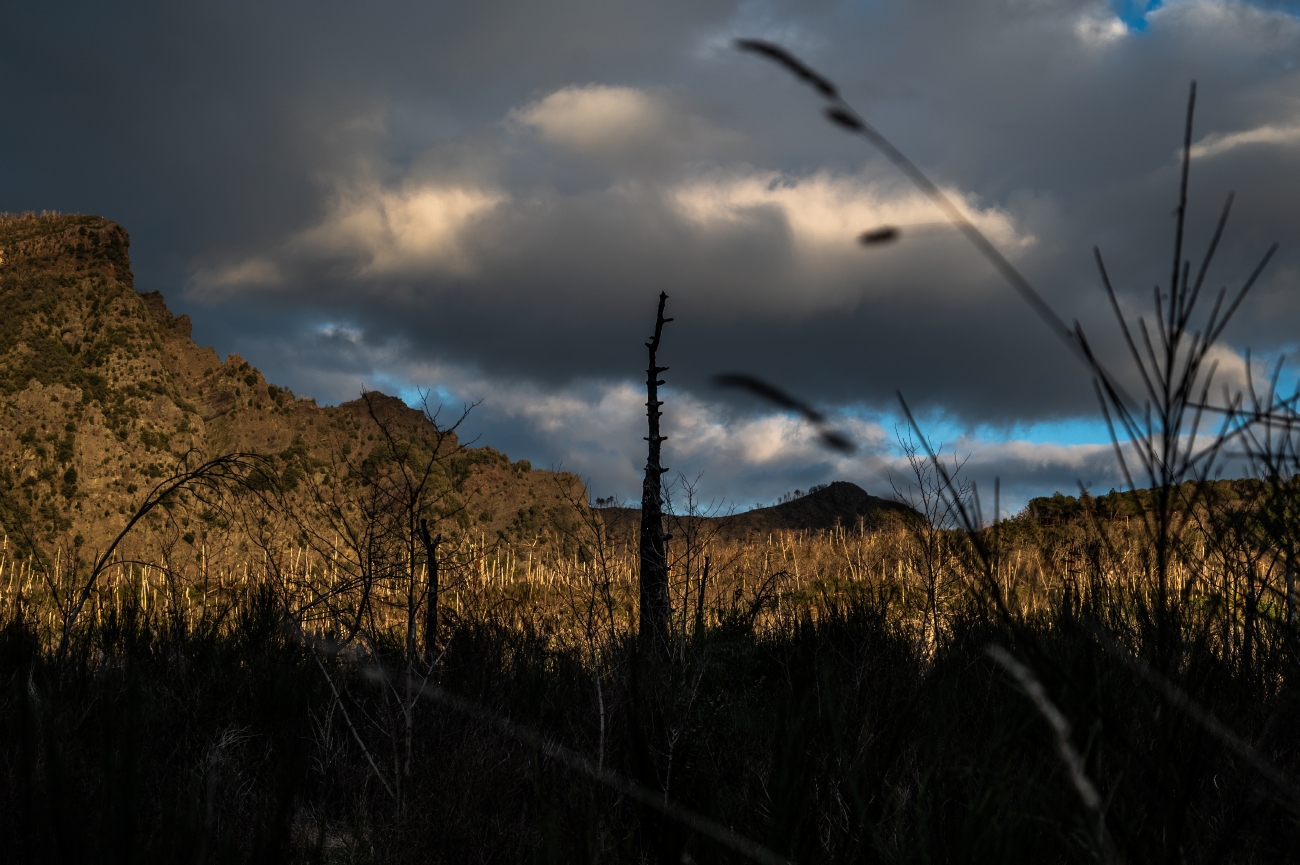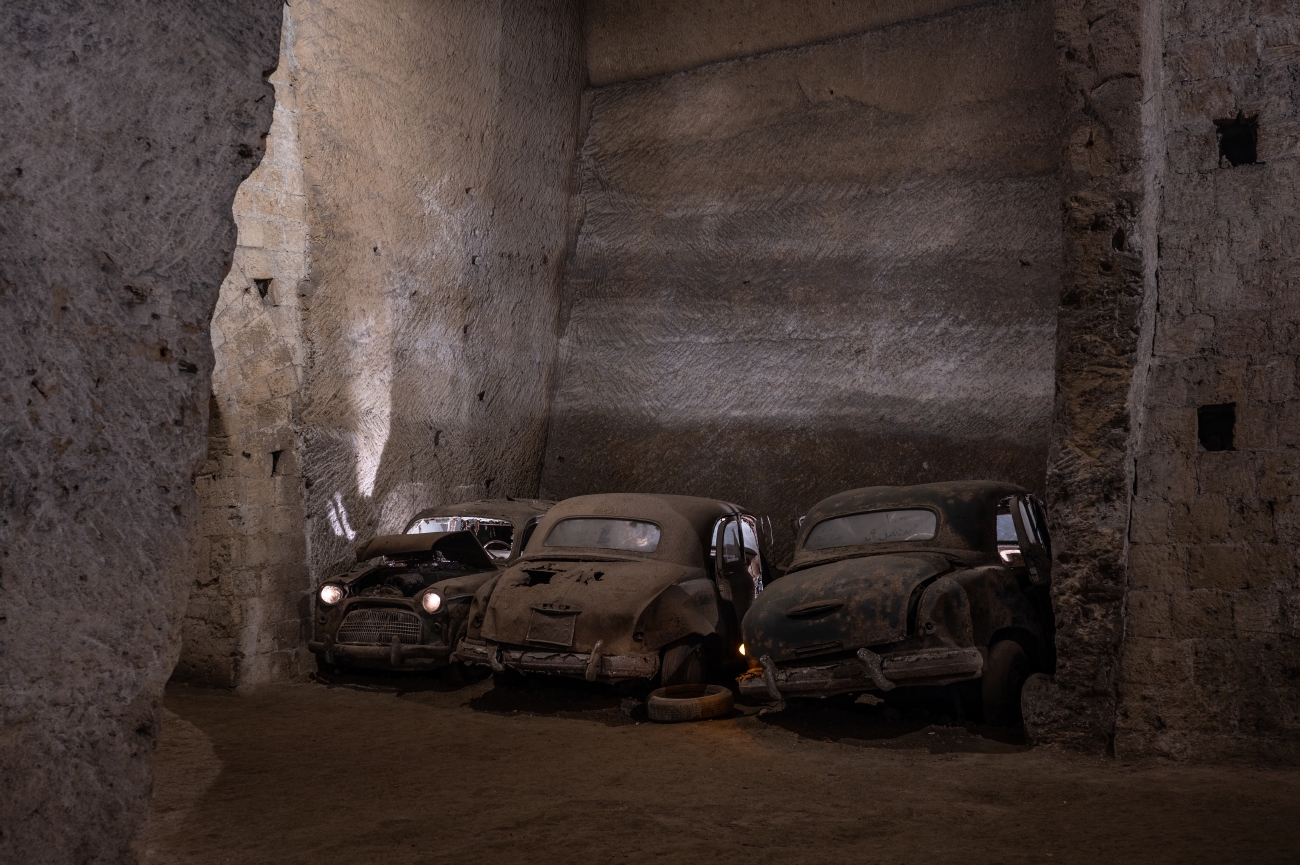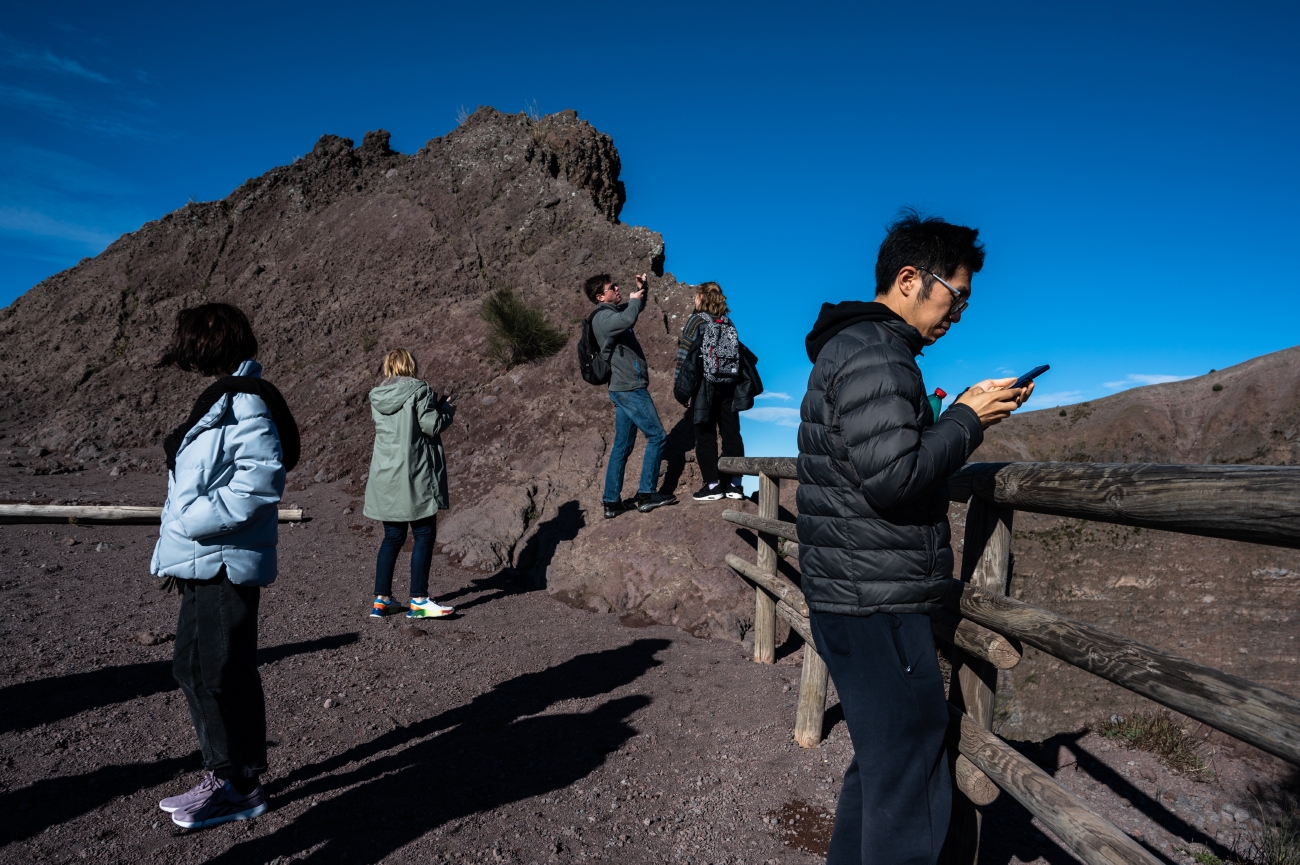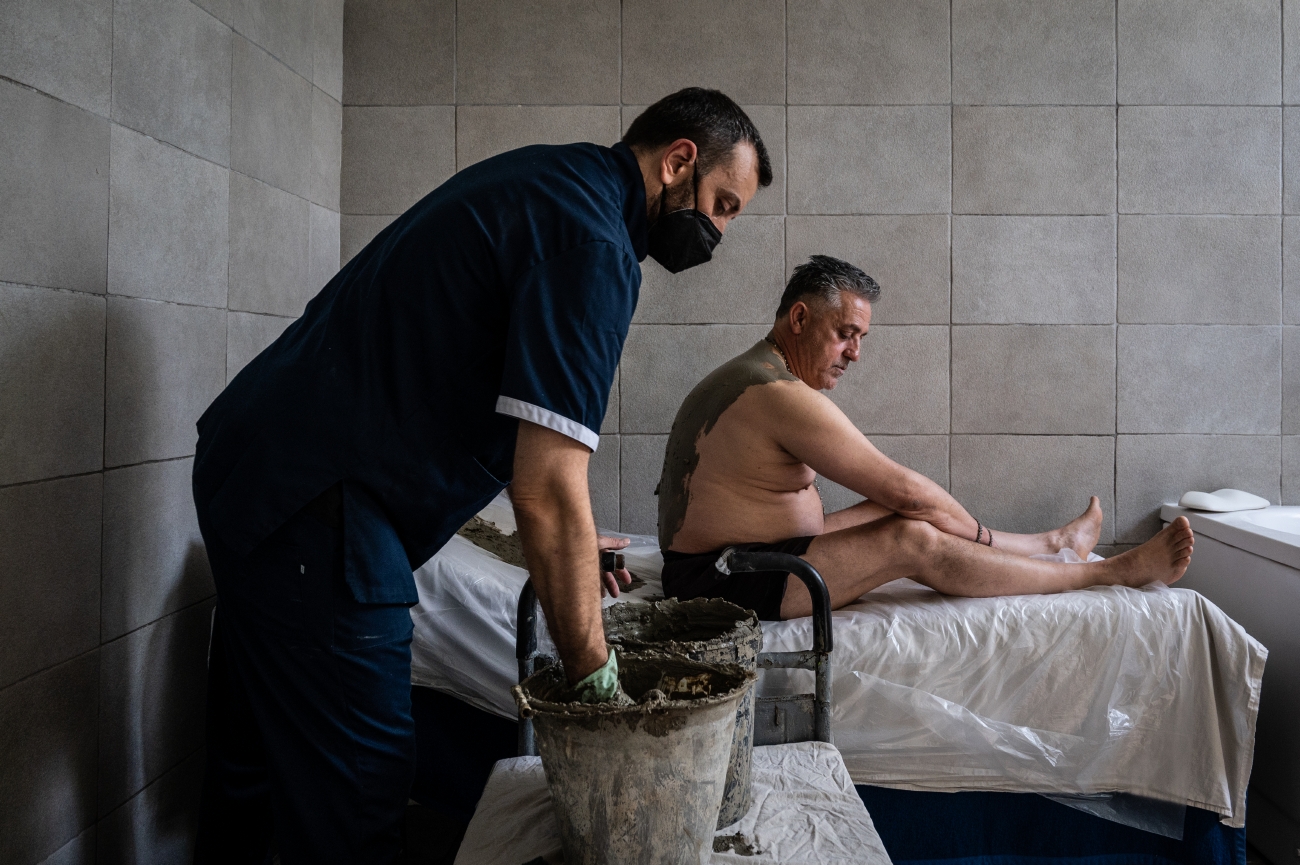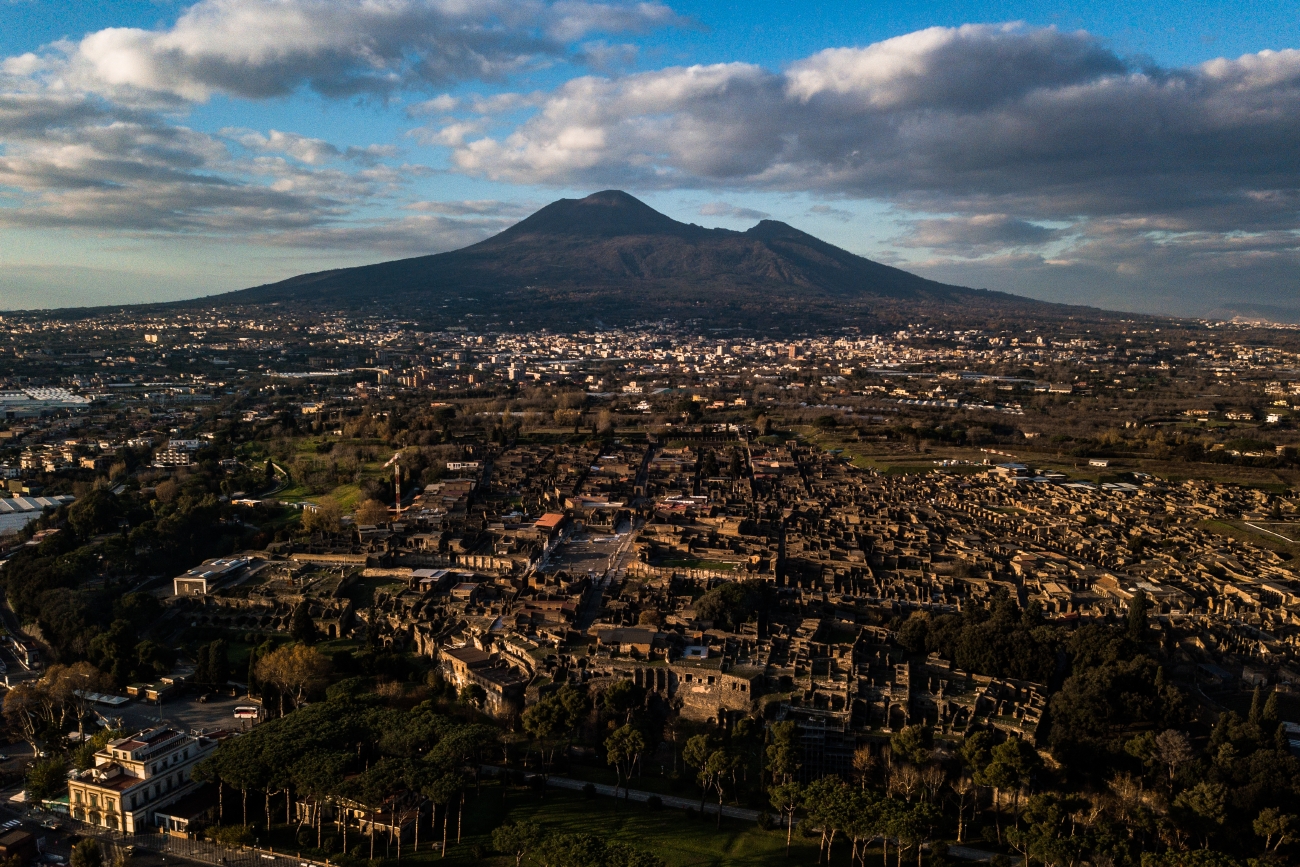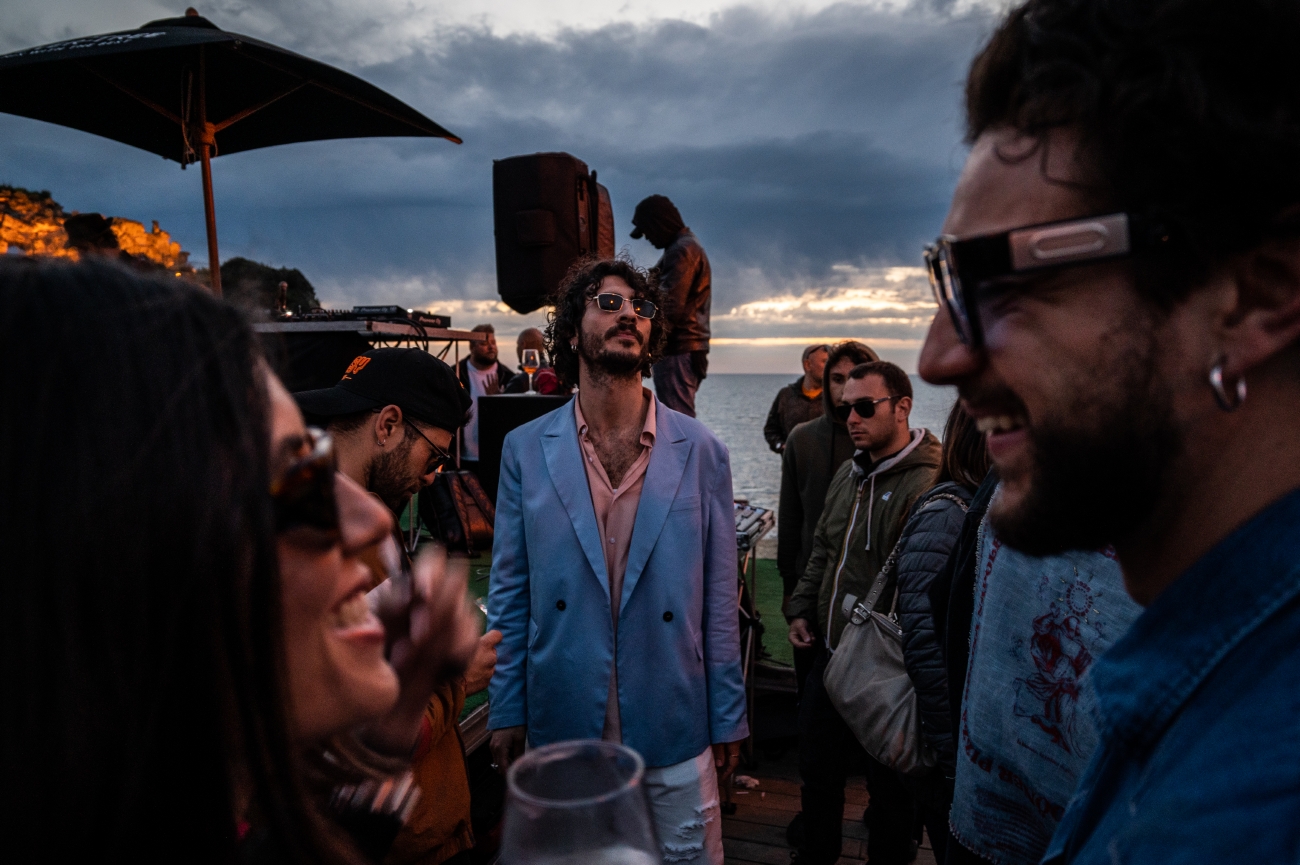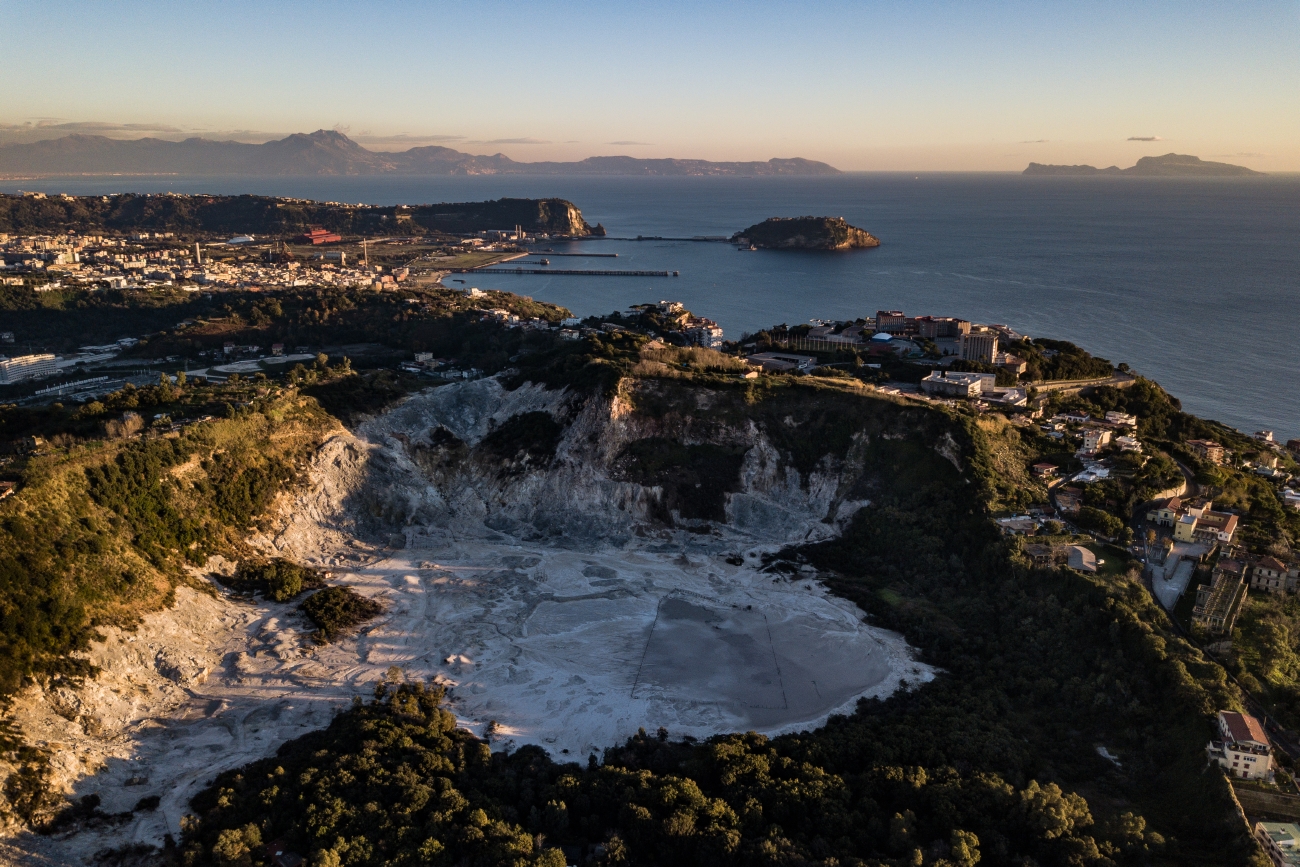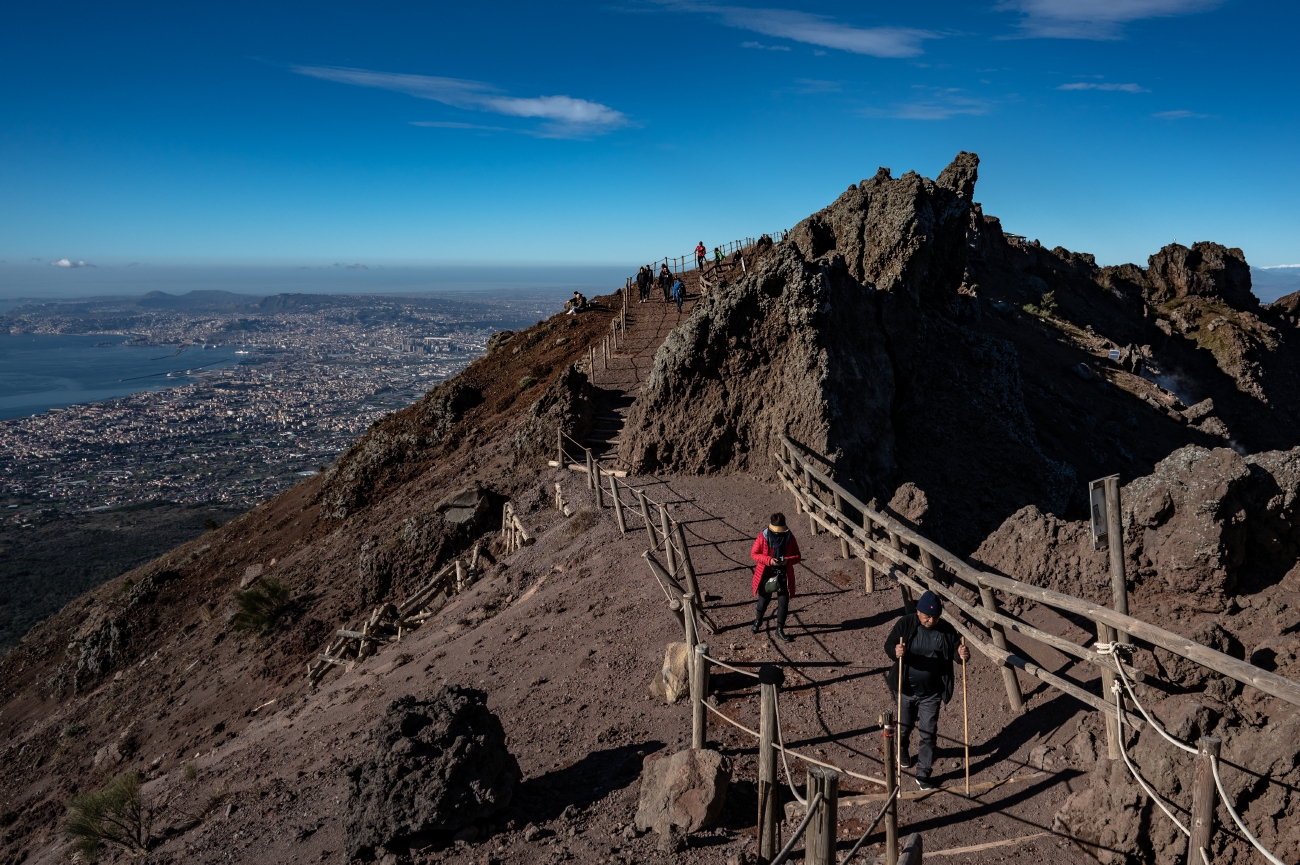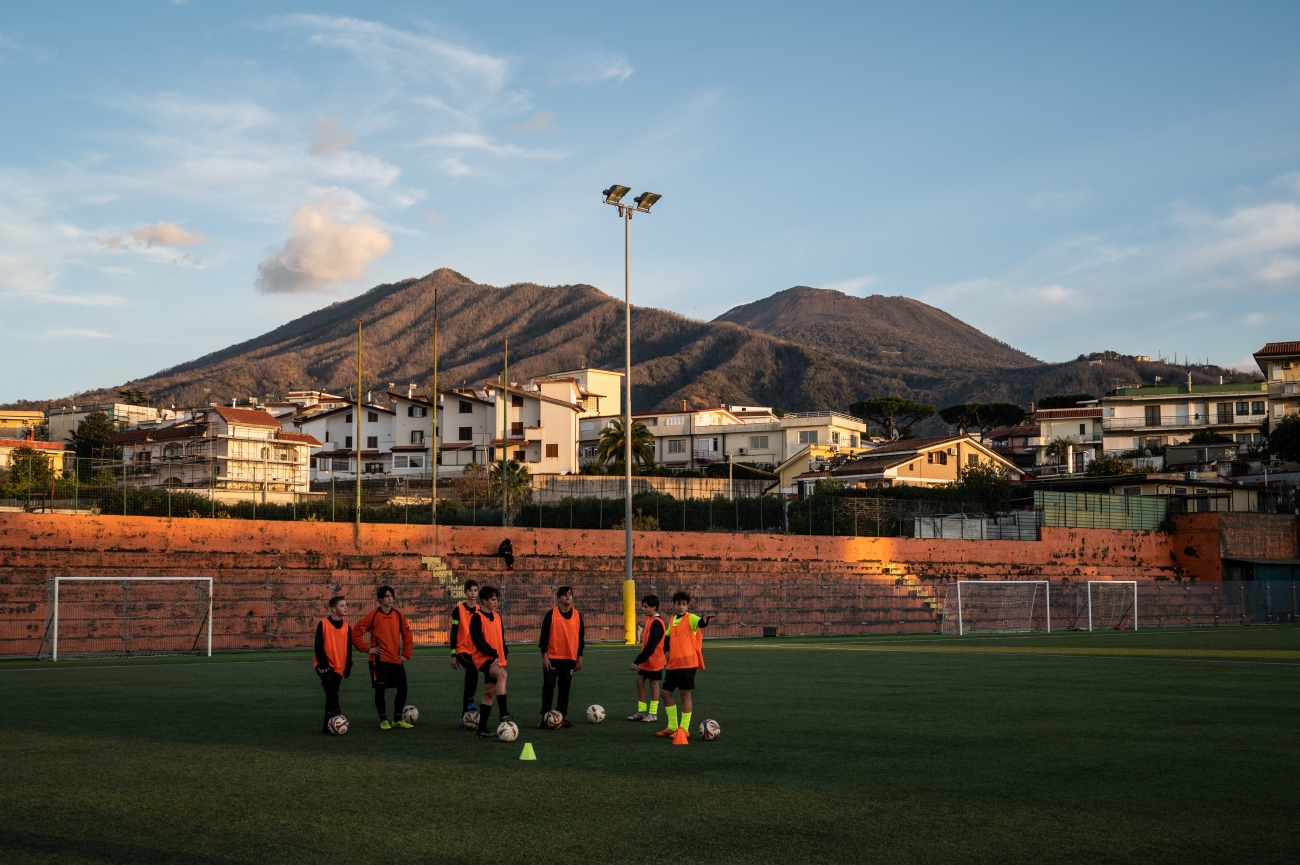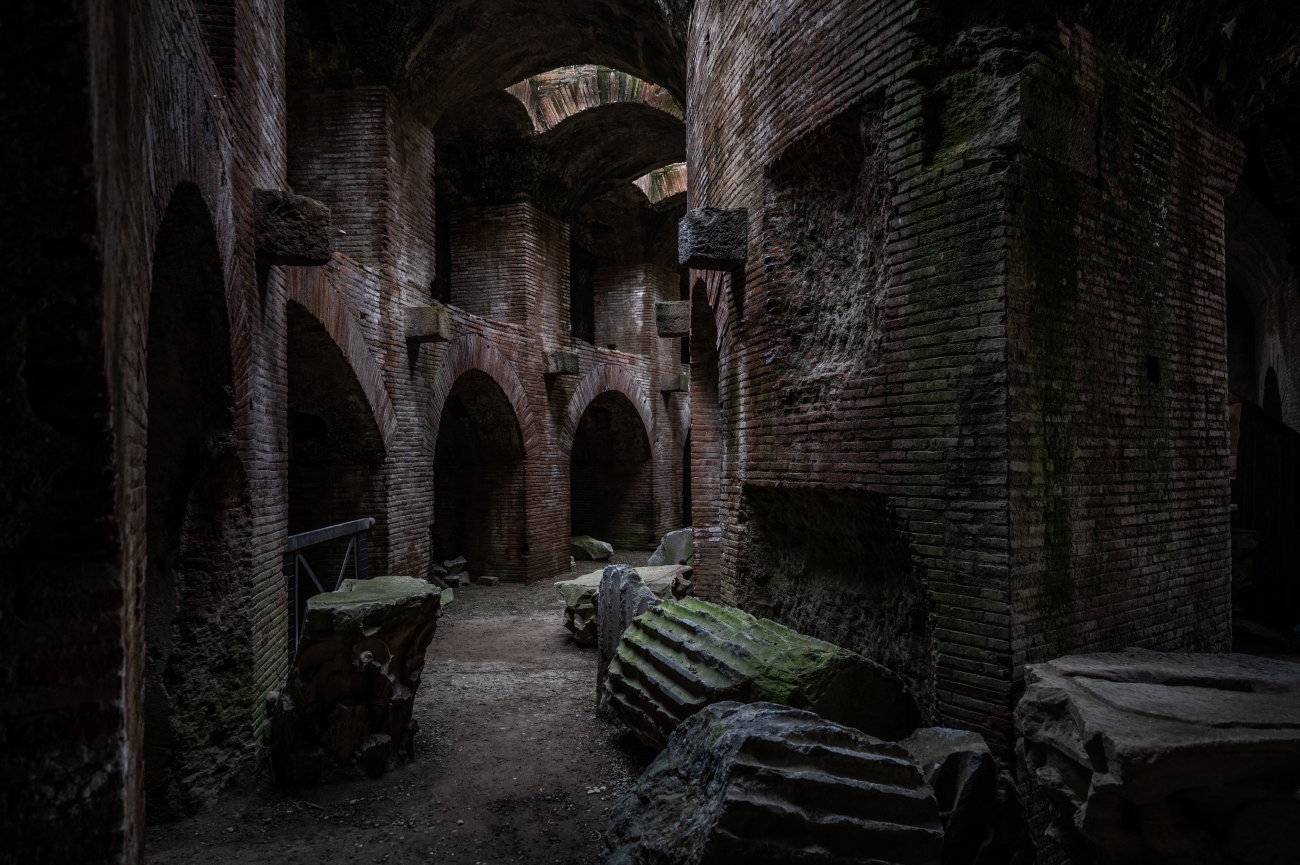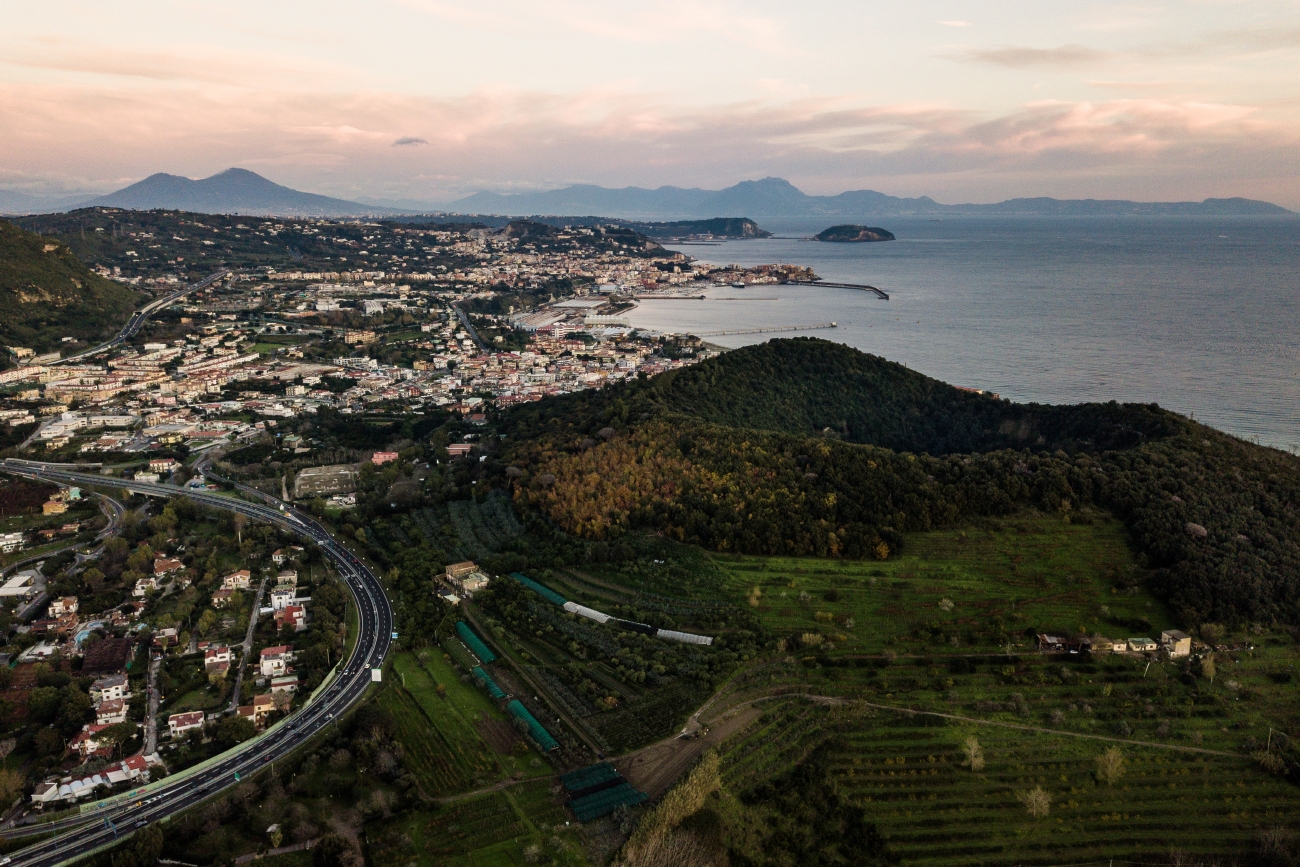Terra Instabilis
Mount Vesuvius and the Phlegraean Fields: the world’s most fearsome super-volcano is a potential time bomb
Photo by Alessandro Gandolfi
The area with the world’s highest volcanic risk is situated in the heart of Italy near Naples. The risk is not posed by the renowned Vesuvius, or rather, not only: the threat in question is the deadly pairing of the volcano that destroyed Pompeii and the underestimated (and almost invisible) Phlegraean Fields, an enormous and devastating caldera situated twenty kilometres to the west. While Vesuvius stands tall in all of its menacing beauty, the Phlegraean Fields, which are currently
declared a “yellow zone” for certain types of activities, can only be perceived fully when viewed from above. This volcanic field has been active for more than 80 thousand years and is punctuated by craters, lakes, cones and fumaroles but also roads, factories and homes, where 500 thousand people live. Together with the 670 thousand people living in the vicinity of Vesuvius, they inhabit one of the planet’s highest risk areas.
Today volcanologists monitor activity using sophisticated instruments, ready to detect the smallest sign of an awakening that – and this is certain – will arrive sooner or later. Volcanoes have brought death to the Bay of Naples but also life: they have made the soil fertile, created thermal springs of water whose properties are considered “magical” and provided tuff rock with which entire cities have been built.
But the danger persists, and a recent study demonstrated that the population living in and around the Campi Flegrei, as the Phlegraean Fields are known in Italian, have only a very low risk perception for volcanic hazards. A sophisticated emergency plan has been developed that would involve mass evacuations but could it ever work in such a densely populated area?
(2022)
